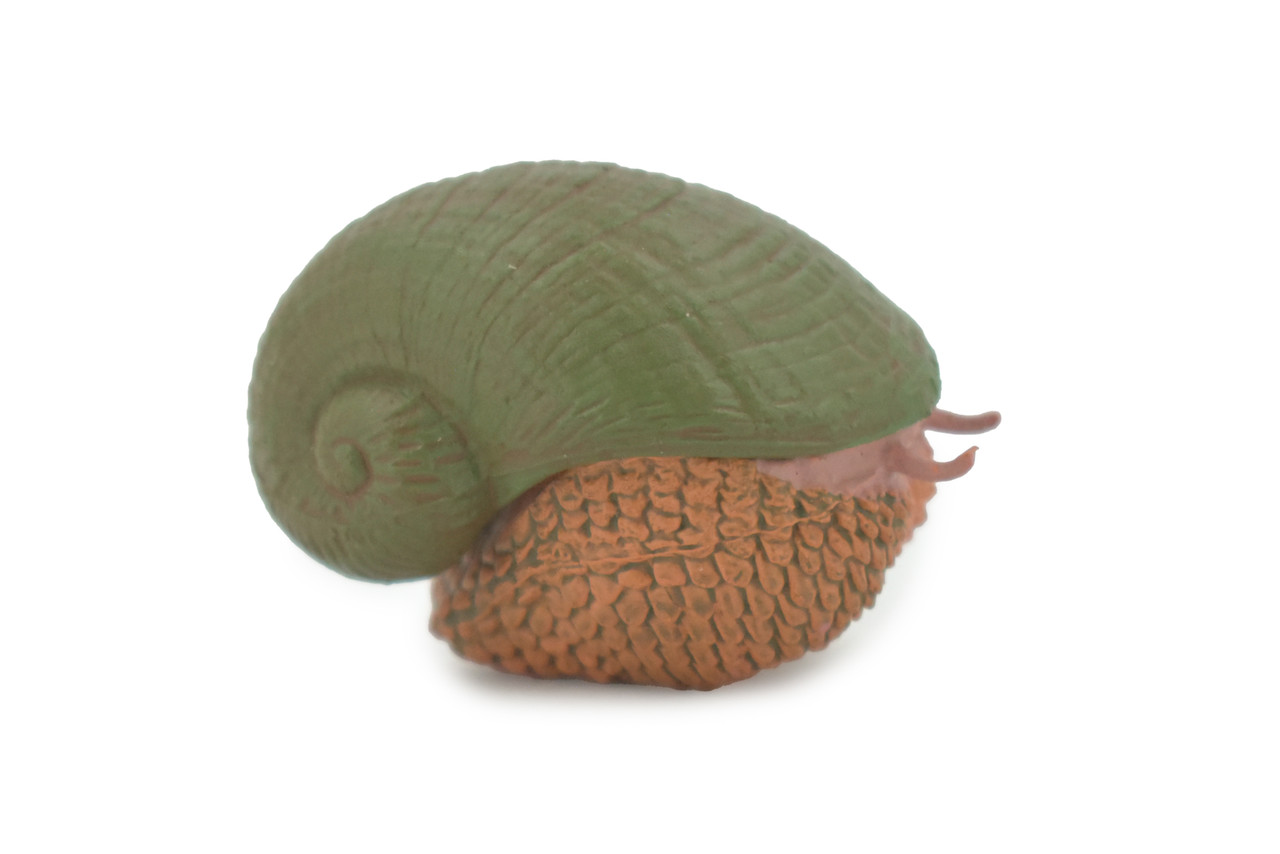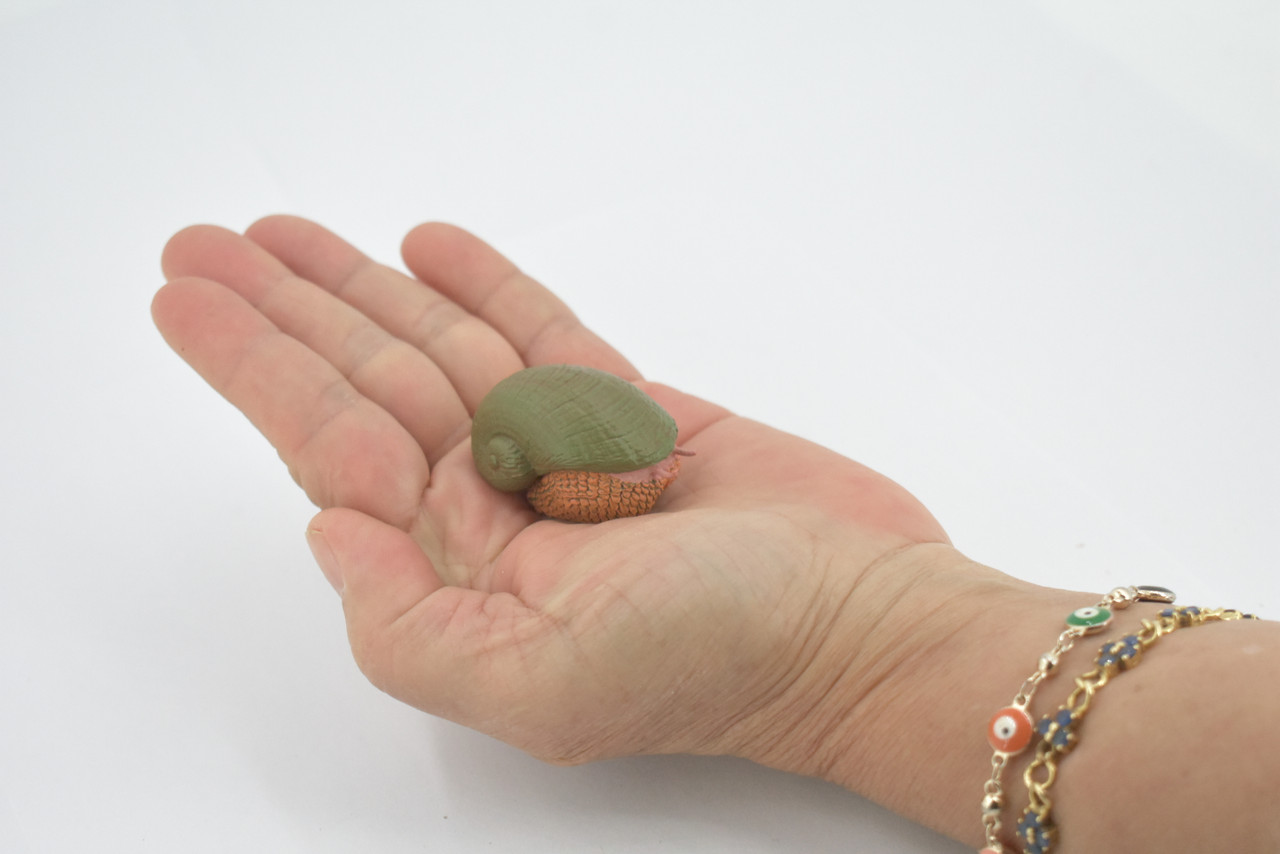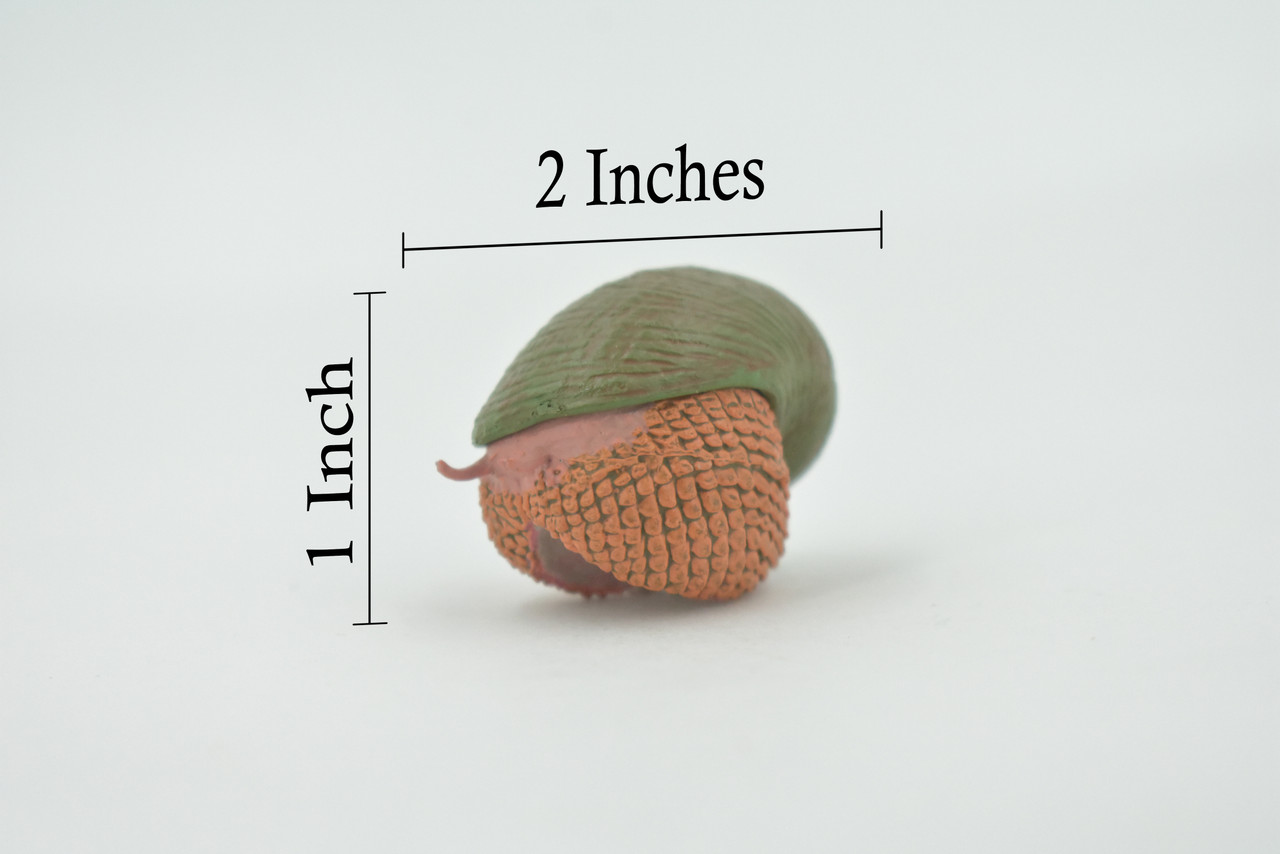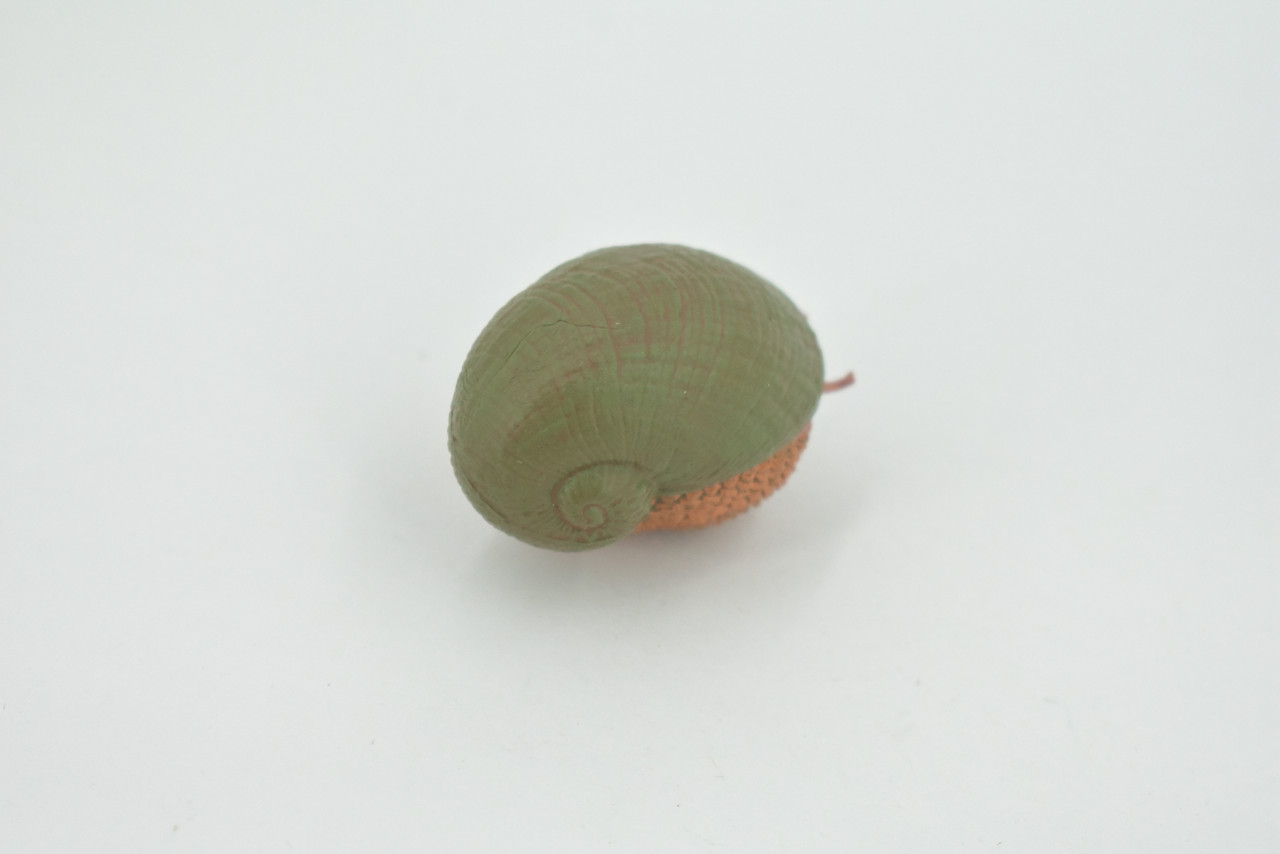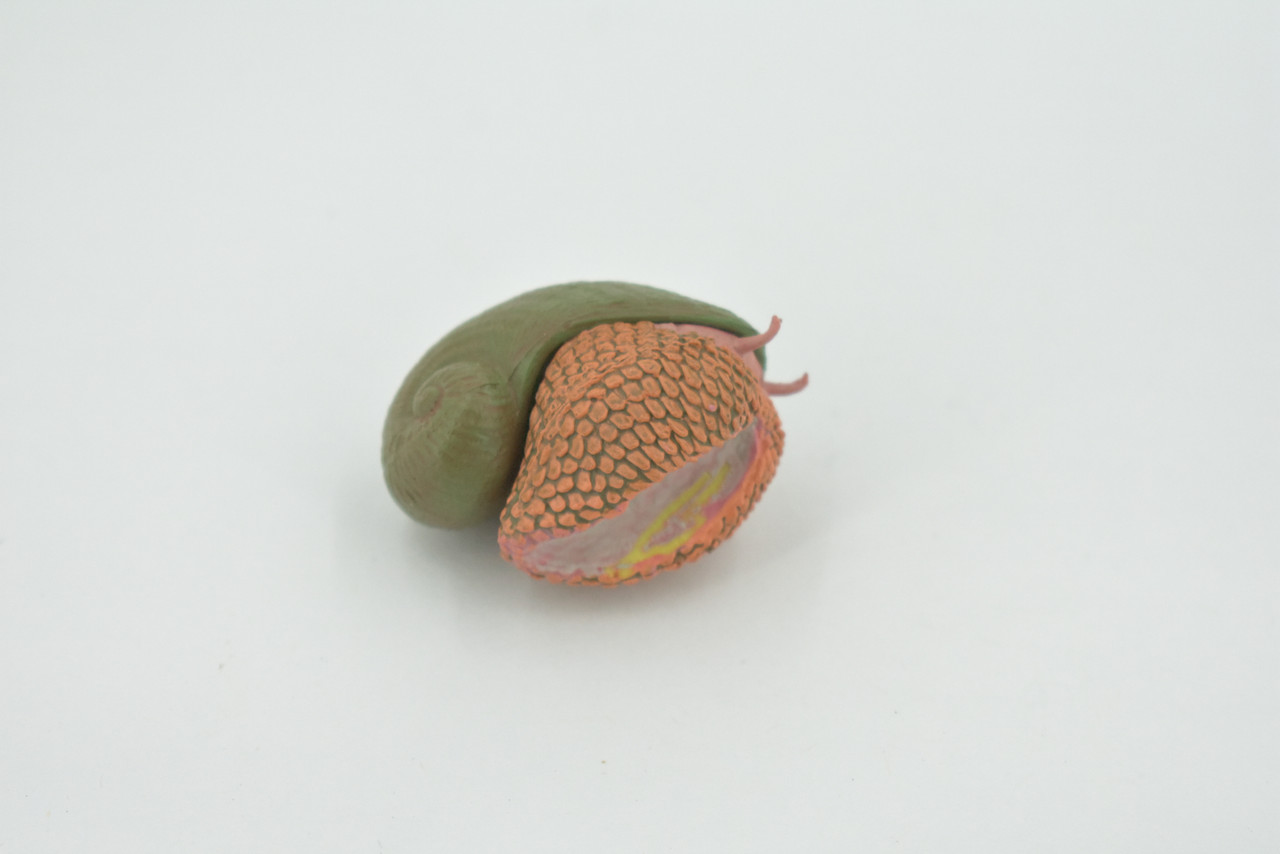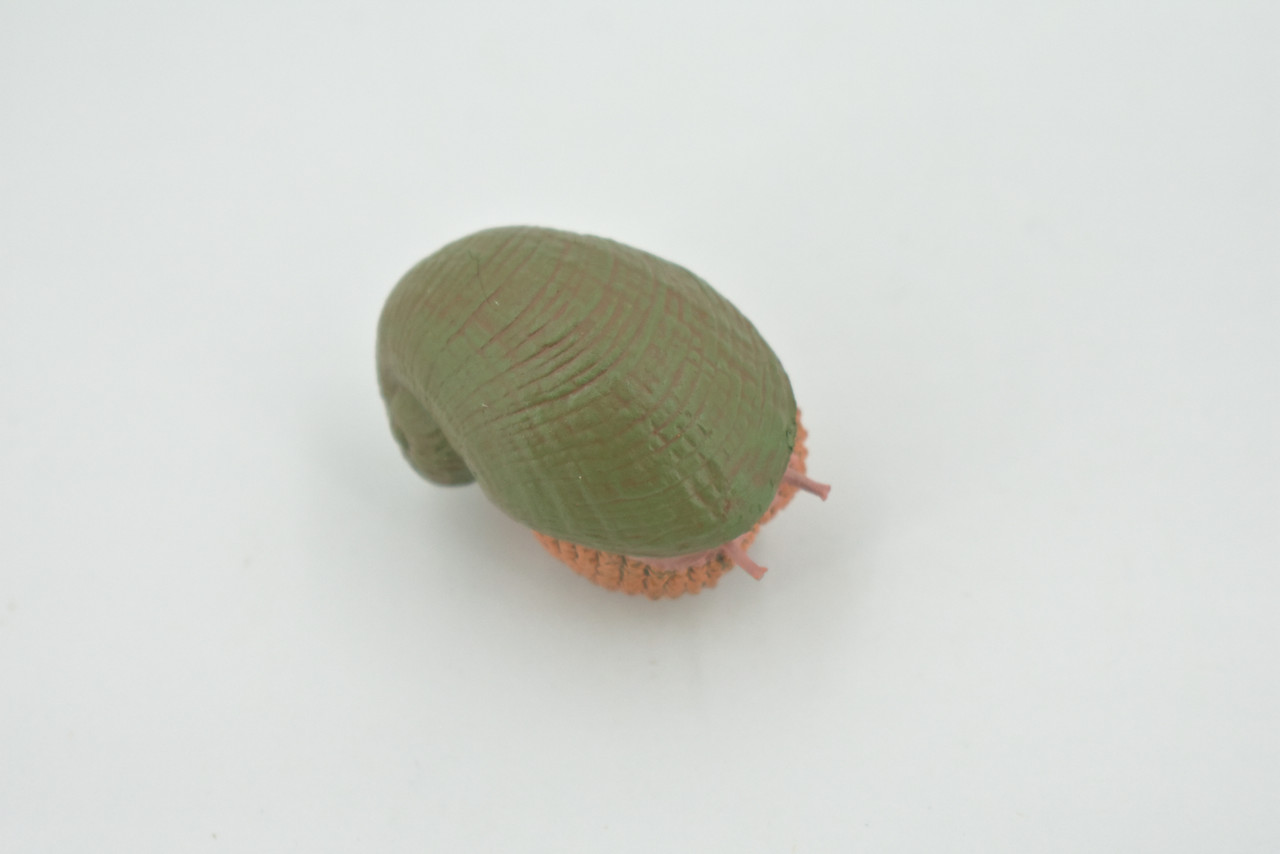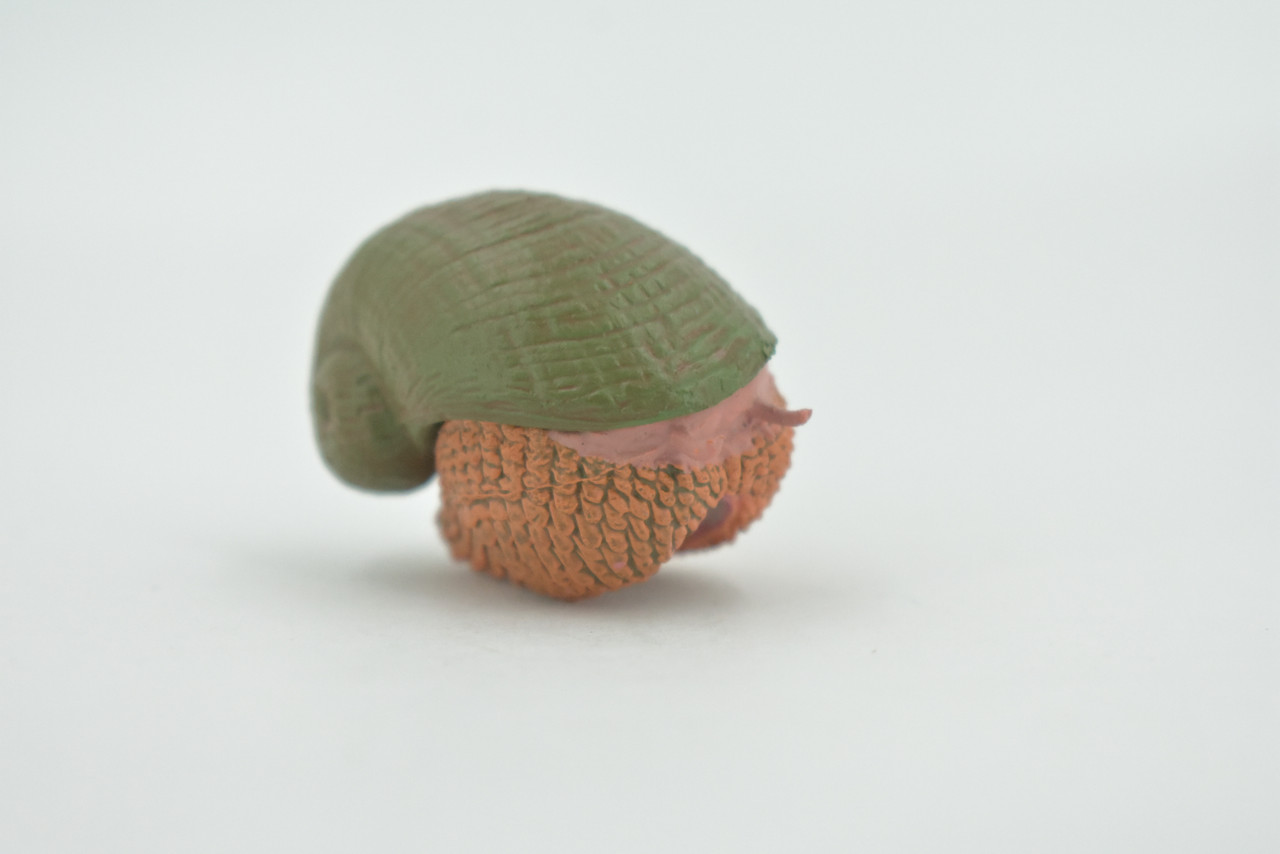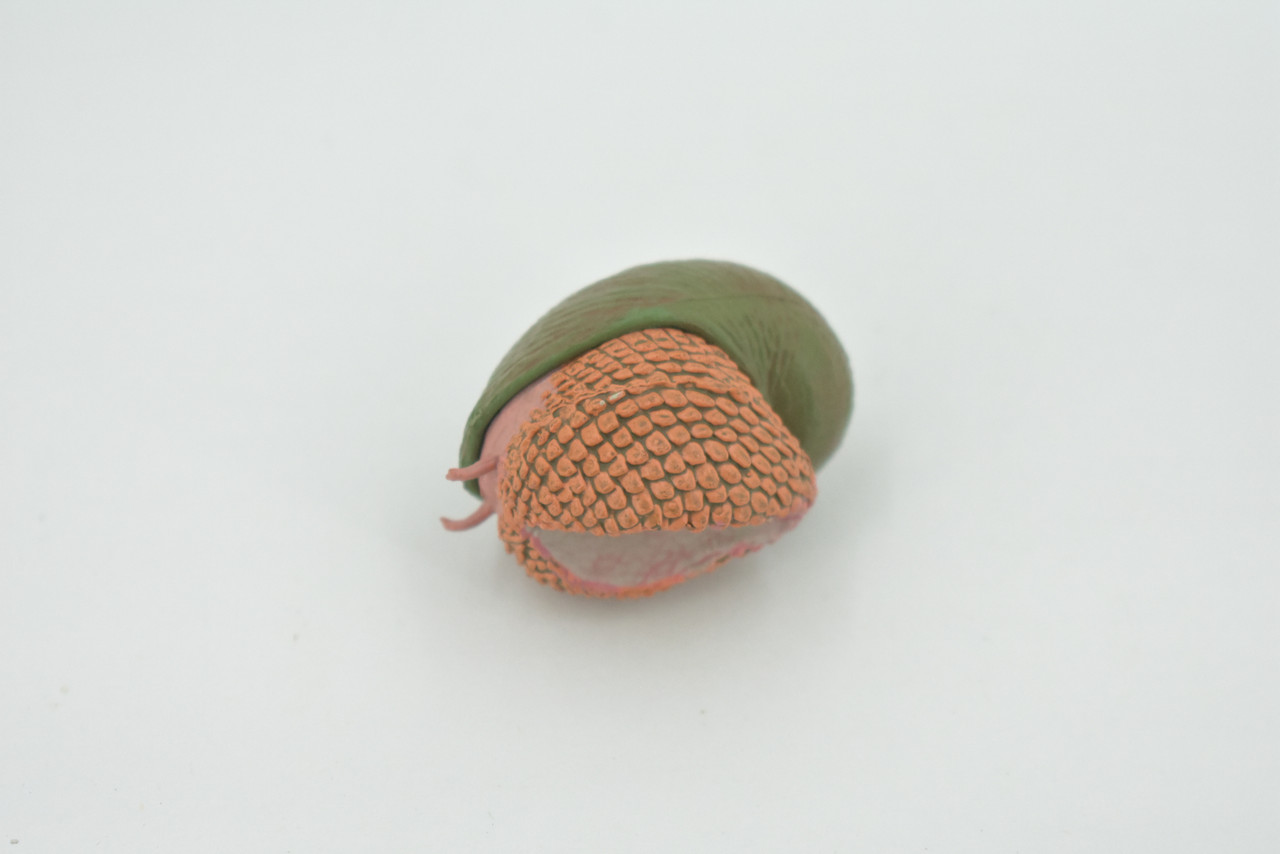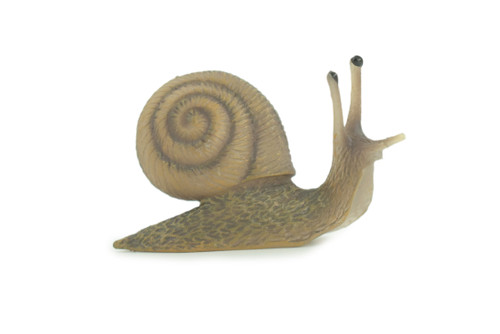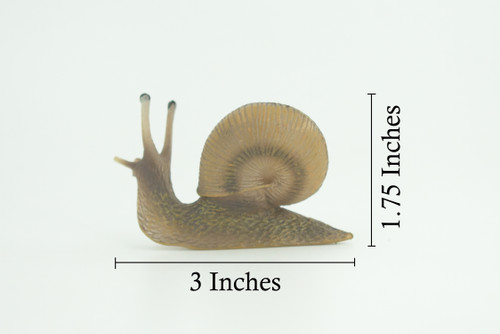Product Description
This Scaly-foot snail, 2" figure includes hand painted features to give it realistic details that are true to natural anatomy. This figure is considered a museum quality replica. Highest Quality Natural Rubber.
On average the shells of adult Scaly-foot snails measure around 32 mm but can grow as large as 45.5 mm. These shells are coiled with three whorls and are globose (spherical) in shape. The spire is depressed as is the initial whorl, additionally, the whorls are tightly coiled. The shell does not have a strong lamellar (fine layered structure) sculpture but does have subtle, closely-spaced ribs and fine growth lines are present. The protoconch (larval form) has not been seen and remain undescribed. The columellar region is covered by a thin callous. The shell itself is milky white and thin with a very large, elliptic aperture. The overall shape of the shell lies between neritiform and limpet-form. The periostracum is thick, brown and lacks folds – it envelops the shell edge. The exterior of the shell is often coated by a black layer of iron sulphide.
Chrysomallon squamiferum, commonly known as the scaly-foot gastropod, scaly-foot snail, sea pangolin, or volcano snail is a species of deep-sea hydrothermal-vent snail, a marine gastropod mollusk in the family Peltospiridae. This vent-endemic gastropod is known only from deep-sea hydrothermal vents in the Indian Ocean, where it has been found at depths of about 2,400–2,900 m (1.5–1.8 mi). C. squamiferum differs greatly from other deep-sea gastropods, even the closely related neomphalines. In 2019, it was declared endangered on the IUCN Red List, the first species to be listed as such due to risks from deep-sea mining of its vent habitat. The shell is of a unique construction, with three layers; the outer layer consists of iron sulphides, the middle layer is equivalent to the organic periostracum found in other gastropods, and the innermost layer is made of aragonite. The foot is also unusual, being armored at the sides with iron-mineralized sclerites. The snail's oesophageal gland houses symbiotic gammaproteobacteria from which the snail appears to obtain its nourishment. This species is considered to be one of the most peculiar deep-sea hydrothermal-vent gastropods, and it is the only known extant animal that incorporates iron sulfide into its skeleton (into both its sclerites and into its shell as an exoskeleton). Its heart is, proportionately speaking, unusually large for any animal: the heart comprises approximately 4% of its body volume.
Thanks for visiting Collectible Wildlife Gifts, the leading provider of high-quality, lifelike animal Designs and gifts! We work hard to ensure we have a diverse range of products. Each product is inspected for their quality craftsmanship. Whether you're searching for a great gift or seeking educational designs for displays, we’ve got you covered.
At Collectible Wildlife Gifts, our products appeal to a wide range of customers, including family, friends, and educators. Our products are trusted and used by professional organizations as well including aquariums, zoos, and movie studios.
Our extensive line of products boasts everything from plush sharks to educational animal growth cycles. Our products bring joy to recipients, and serve as valuable educational resources, sparking curiosity and fostering learning.
Discover the wonders of the natural world with Collectible Wildlife Gifts. Browse our collection today!

